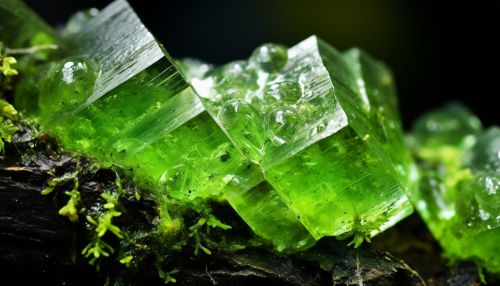Prehnite-Pumpellyite Group
Introduction
The Prehnite-Pumpellyite group is a collection of minerals that are structurally related and share similar chemical compositions. This group of minerals is named after two of its most prominent members, Prehnite and Pumpellyite. These minerals are typically found in low-grade metamorphic rocks and are often associated with other low-grade metamorphic minerals such as chlorite and serpentine.


Composition and Structure
The Prehnite-Pumpellyite group minerals are characterized by their complex chemical compositions and unique crystal structures. They are hydrous aluminium silicates, with additional elements such as iron, magnesium, manganese, and calcium often present in significant amounts. The exact chemical composition can vary widely between different minerals in the group, leading to a diverse range of physical properties and appearances.
The crystal structure of Prehnite-Pumpellyite group minerals is typically characterized by chains of octahedra and tetrahedra, which are linked together to form a three-dimensional network. This structure is responsible for the characteristic cleavage and fracture patterns observed in these minerals.
Formation and Occurrence
Prehnite-Pumpellyite group minerals are typically formed during the low-grade metamorphism of basaltic rocks. This process involves the alteration of the original rock under conditions of moderate temperature and pressure, leading to the formation of new minerals. The specific conditions under which these minerals form can provide valuable information about the geological history of the area in which they are found.
These minerals are commonly found in metamorphic facies associated with subduction zones, where oceanic crust is forced beneath continental crust. They can also occur in hydrothermal veins and metasomatic deposits.
Economic Importance
While the Prehnite-Pumpellyite group minerals are not typically mined for their own sake, they can be important indicators of other valuable mineral deposits. For example, the presence of these minerals can indicate the presence of copper, gold, and other ore deposits. In addition, prehnite is sometimes cut and polished for use in gemstone jewelry.
